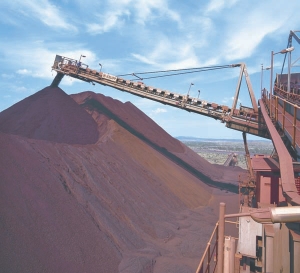Rio Tinto (RTP-N, RIO-L) shares surged 10.3% on the London Stock Exchange and 6.2% on the New York Stock Exchange on June 5 after the mining giant declared it was walking away from a deal with Chinese metals group Aluminum Corp. of China (ACH-N) in favour of a US$15.2-billion rights issue and an iron ore joint venture with BHP Billiton (BHP-N, BLT-L).
Rio had welcomed the US$19.5- billion investment deal with Aluminum Corp. of China, or Chinalco, in February when credit and stock markets were falling apart and it was trying to cut its debt load of US$38 billion. Under the proposed tie-up, Chinalco was to have injected US$19.5 billion in cash into Rio in return for up to an 18% shareholding, US$7.2 billion in convertible bonds, two seats on the board and a number of coveted Pacific Rim iron ore, aluminum and copper assets.
“They had a lot of debt and didn’t have the cash flow and the Chinese were seen as the golden parachute,” says a Torontobased analyst who requested anonymity. “But now it looks like the world is not coming to an end and there are other financing options out there.”
From the start, however, the deal had been unpopular with Rio shareholders who believed it favoured the Chinese and would also give the world’s biggest steelmaking nation more power over commodity prices. Iron ore prices are mostly set on long-term contracts that are negotiated each year –unlike commodities like copper, which are freely traded.
“The Chinese are end users of iron ore and prices are set every year by fat old white men telling the Chinese what they will be charged for a pound of iron ore,” says the analyst. “If the Chinalco deal had gone through, the customer would have become the business partner and would have learned how the pricing mechanisms work. . . Keeping the Chinese as customers rather than business partners was seen as a giant positive by the markets.”
It’s likely some officials at Australia’s Foreign Investment Review Board also heaved a sigh of relief as they were due to make a decision on whether to approve the deal by June 14. On March 29, Australian Treasurer Wayne Swan blocked China Minmetals from taking over Oz Minerals (OZMLF-O, OZL-A) because its Prominent Hill mine is near a military facility. In a more straightforward deal involving Chinese investment in Australia, however, Swan did give his approval to Chinese steelmaker Hunan Valin’s plan to increase its stake in Australia’s iron ore producer Fortescue Metals Group (FSUMF-O, FMG-A).
“The Australian government loved it,” notes the analyst. “It is pretty sticky on their companies staying Australian.”
It remains unclear what lies ahead for Chinalco and other Chinese companies hoping to acquire or invest in Western mining companies. “Long-term, I don’t think the Chinese have had a great success rate in buying Canadian, American or Australian assets,” muses the analyst. “The only things the Chinese have been able to get (in the West) are things that other companies have turned down. . . If they had wanted to come in and buy Teck you can be sure there would have been an uproar all up and down Bay Street.”
Under Rio’s proposed deal with BHP Billiton, which is expected to be completed in 2010, the two companies will form a 50/50 joint venture that combines all current and future iron ore operations in Western Australia. Adjacent mines will be combined into single operations and shorter rail hauls and more efficient allocation of port capacity will trim costs, Rio Tinto said in a press release.
“Both companies believe the net present value of these unique production and development synergies will be in excess of US$10 billion,” Rio stated.
In a research note to clients, Dahlman Rose & Co., a New Yorkbased investment bank specializing in natural resources, argued that given cost-savings associated with freight, manpower and logistics, the US$10 billion in savings estimate is “reasonable and possibly conservative.”
Under the proposed deal, BHP will pay Rio US$5.8 billion to raise its equity interest in the joint venture, because Rio Tinto currently has more production capacity in the region.
Once up and running, the joint venture will deliver iron ore in equal volumes to ships designated by Rio and BHP to sell independently through their own marketing groups, Rio said.
Dahlman Rose & Co. noted that regulators are likely to approve the deal. Not only has a significant amount of regulatory work already been done in connection with BHP’s earlier offer for Rio in 2007- 08, but given the separate marketing arms that are to be maintained by each company, “regulatory scrutiny will be less than a global agreement.”
But the World Steel Association quickly slammed the deal, arguing it raised serious competition and pricing issues, and urged competition regulators to look closely at the “implications for future pricing regimes and the competitive environment for iron ore.”
As for Rio’s planned US$15.2-billion rights issue, about US$11.8 billion will go to Rio Tinto PLC and US$3.4 billion to Rio Tinto Ltd. The rights issue will allow the group to meet its Alcan facility debt repayment obligations fully in 2009 and substantially in 2010.
The issue will cut Rio’s net debt to about US$23.2 billion, which the company says exceeds the commitment it made in December 2008 to reduce net debt by US$10 billion by the end of 2009.
The rights issue consists of 21 new Rio Tinto Plc shares offered for every 40 existing shares at 14 per share, and 21 new Rio Tinto Ltd. shares offered for every 40 existing shares at A$28.29 per share.
At the end of the trading day on June 5, Rio closed up 6.2% at US$194.06 per share in New York and gained 10.3% to 30.01 in London.
BHP Billiton gained 6.8% to 15.55 in London and 5.47% to US$60.16 per share in New York.


Be the first to comment on "Rio Tinto Scraps Chinalco Deal For Iron Ore JV With BHP"